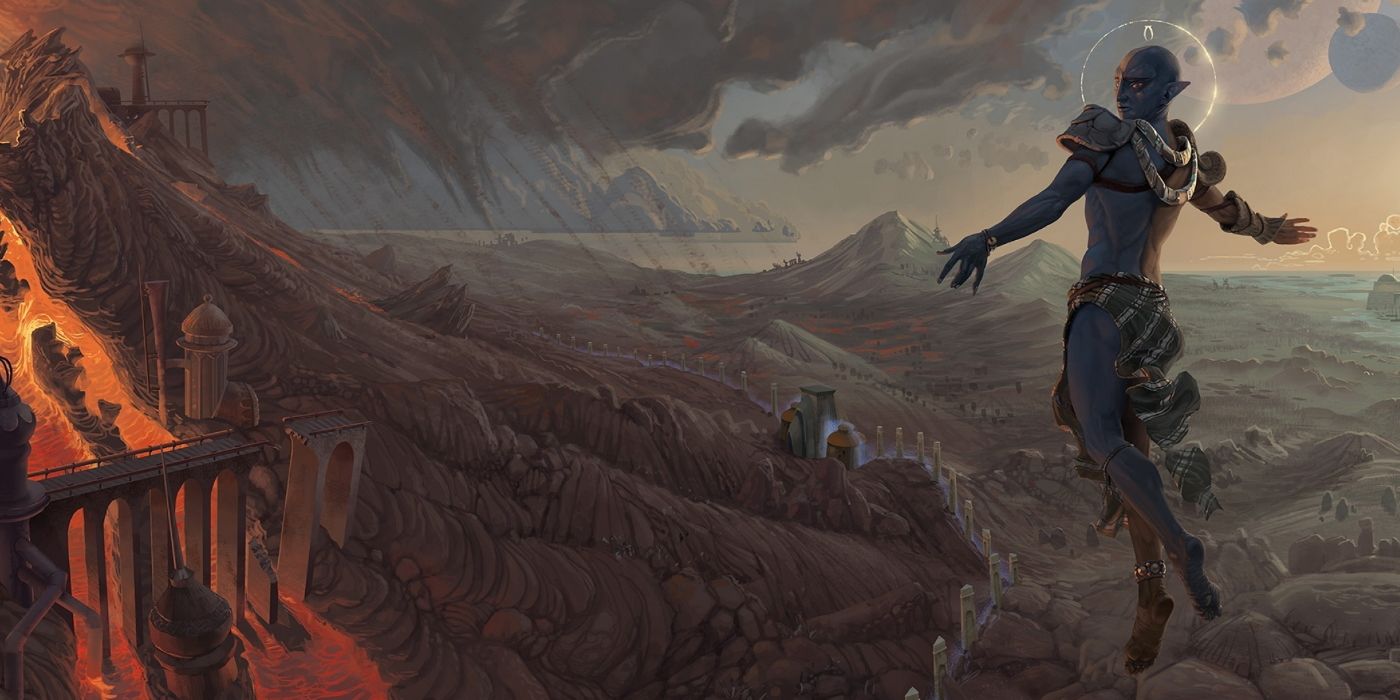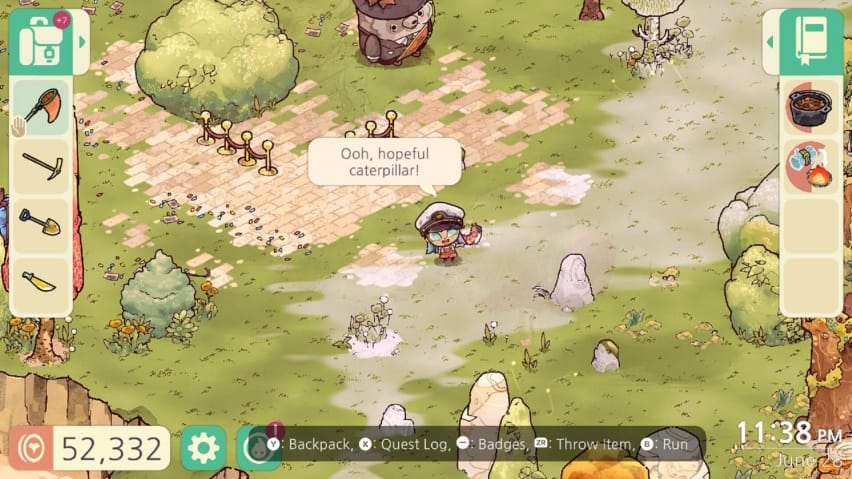

On the surface, the setting of The Elder Scrolls is instantly recognizable to anyone with a passing familiarity with mainstream fantasy. There are Elves, there are humans, there's an Empire, Orcs, and so on. In many ways, the series' relatively generic world has been part of the key to its success—the fact that Skyrim's setting was instantly recognizable as a fantasy stand-in for Scandinavia during the Viking Age helped make the game the hit it was.
Dig a little deeper, however, and The Elder Scrolls' lore reveals itself as some of the strangest in modern mainstream fantasy. In many cases, this metaphysical lore is rarely relevant to the games' stories. In practice, however, it is vital to making Tamriel function as the setting for Bethesda's flagship RPG series.
RELATED: The Elder Scrolls 6 May Be Doing Elsweyr and Black Marsh a Disservice

The Elder Scrolls' world is pretty easy for new fans to wrap their heads around. There's a stand-in for the Roman Empire with all the trappings from Latin names to Roman ranks and armor designs. The Iliac Bay roughly replicates the Mediterranean sea, with the Bretons representing a mix of European countries while the Redguard represent a mix of North African influences in their clothes and architecture.
Some of Tamriel's provinces are stranger than others. Skyrim may be a clear counterpart of the Nordic world, but beyond the human-dominated provinces places like Morrowind are far harder to find clear real-world equivalents to. Despite that, the fact that the game's playable Elves are divided into High Elves, Wood Elves, and Dark Elves is a dynamic instantly recognizable to most players.
The Elder Scrolls games have focused on the more generic, accessible areas of Tamriel since Oblivion, which despite its success was met with some criticism from fans who enjoyed Morrowind's more alien world. Beneath all of The Elder Scrolls' settings, however, lies some seriously weird lore that turns the series' standard fantasy setting on its head.

There are plenty of examples of The Elder Scrolls lore getting very, very weird. One of the most well-known examples is CHIM. CHIM is the idea that a character within the Elder Scrolls world can come to the realization that they exist within the unconscious dream of an extra-universal being known as the godhead. If they come to that realization and assert their individuality anyway, they achieve CHIM, affording them god-like powers over reality. If they allow themselves to be overwhelmed by the fact of their non-existence, a phenomenon named Zero Sum takes place, and they are wiped from existence.
Only two characters are confirmed to have achieved CHIM. The first is Vivec, who plays a substantial role in Morrowind. While his CHIM is referenced, the full implications aren't really addressed. The other is Tiber Septim, whose CHIM allowed him to become the god Talos and perform otherwise impossible acts like retroactively transforming Cyrodiil from a jungle into a more temperate climate.
Another part of the games' stranger lore is the idea of Dragon Breaks. Dragon Breaks are temporal phenomena where multiple events take place simultaneously, and where the disparate timelines are then somehow reconciled into a single consistent reality. The most notable Dragon Break in the series is the Warp in the West. The player character in Daggerfall has the choice of which faction they're going to side with, giving them a powerful artifact they need to defeat the others. Using that artifact, however, caused a Dragon Break which saw the entire Iliac Bay region reorganized into just a few distinct kingdoms, with each faction getting the artifact in their own timeline, and then reality warping to make all possible choices true to some degree.
RELATED: The Case For The Elder Scrolls 6 To Star The Orcs

A lot of fans choose to ignore these elements of the lore, and not without good reason. For some, this lore simply seems too outlandish to be immersive, and in many cases, these elements do raise huge questions. Despite in-game books like Where Were You When The Dragon Broke? diving into some of the series' weirdest lore, Bethesda's attempts to explain this lore rarely make it less confusing. Whether Talos really did turn Cyrodiil from a jungle to a temperate climate in the lore, or whether it was just a retcon on Bethesda's part has often been the subject of debate among fans. It is that ambiguity, however, wherein the true genius of The Elder Scrolls' weirdest lore lies.
Each part of The Elder Scrolls' strangest metaphysical lore has a clear function that complements an RPG series with a focus on freedom of choice like The Elder Scrolls. The Warp in the West allowed Bethesda to make every Daggerfall ending canon, instead of committing to a single ending and invalidating the choices of all other players. Dragon Breaks as a concept have the clear function of essentially removing concerns about canon from the series when possible, making all player choices equally valid.
Just as the power of the Dragon Break allows Bethesda to avoid prescribing past player character actions, CHIM allows the studio to retcon elements of the setting while keeping its universe relatively consistent. Cyrodiil may be described as a jungle in earlier games, but giving Tiber Septim CHIM allowed the studio to change that aspect of the setting without directly retconning the lore on a meta level. It may be a clunkier solution than some fans would prefer, but much of Tamriel's weirdest lore helps the series avoid prescribing too much of the world's canon, giving players the roleplaying freedom the series is best known for.
Ironically, this complements the series' otherwise generic setting. It allows every game to afford the player near-total freedom to explore the world without Bethesda having to worry about keeping everything totally consistent between games. It also helps The Elder Scrolls' setting feel truly unique, with these weirder parts of the lore hinting that there's far more to be known about the universe than the more standard fantasy elements first let on and that even decades after the first game's release there are still secrets to uncover.
The Elder Scrolls 6 is in development.
MORE: How AI Could Transform The Elder Scrolls 6's Voice Acting



